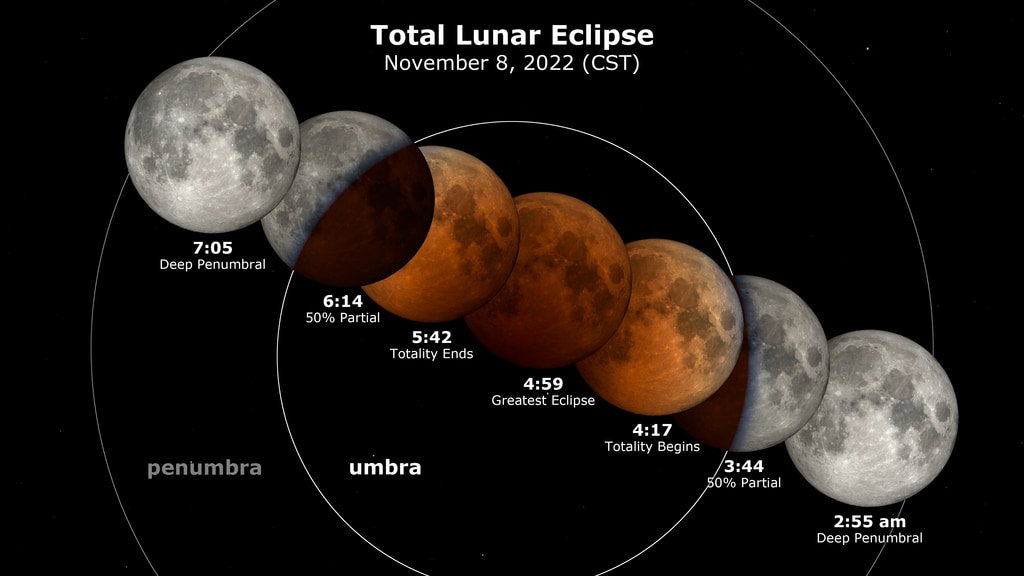Total Lunar Eclipse “Blood Moon” Early Tuesday Morning
A total lunar eclipse will occur early Tuesday morning and will be the last total lunar eclipse to happen again until March 14, 2025. A total lunar eclipse occurs when the moon, Earth, and the sun all become aligned with the moon passing through the Earth’s shadow. When this occurs, the Earth’s shadow causes the moon to pick up a reddish-colored hue which is where the name “Blood Moon” comes from. The reddish-colored hue comes from the scattering of sunlight which is then cast over the moon behind it. This is otherwise known as Rayleigh scattering.
A graphic from the NASA Goddard Space Flight Center/Scientific Visualization Studio of the light from the Sun passing through the side of Earth, scattering through its atmosphere and giving the reddish hue we see on the moon during the total lunar eclipse.
According to NASA, the partial eclipse begins around 3:09 AM CST as the Moon begins to enter the Earth’s umbra. During this stage, it will look like a bite was taken out of the moon. Totality begins around 4:17 AM CST. During this stage, the full Moon will be in the Earth’s umbra with the Moon beginning to take on that reddish color we previously were talking about. Around 5:42 AM CST, Totality will end with the moon now exiting Earth’s umbra and the reddish color begins to disappear. The Moon will once again look like a bite was taken out of it. The partial lunar eclipse ends around 6:49 AM CST. The moon sets around 6:00 AM CST, so it will no longer be visible after that point.
If you happened to capture some photos and videos from the Total Lunar Eclipse, we would love to see them! Feel free to send them to us on any of our social media platforms, or send us an email at the address below!


